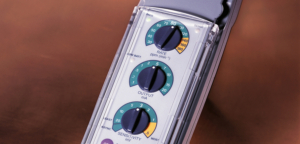The temporary pacemaker (TPM) involves heart stimulation due to often slow heart rate (bradycardia) or less frequently rapid heart rate (tachycardia), for a short time until the cause of heart rhythm disturbance is eliminated or until a permanent pacemaker is implanted. A temporary pacemaker, if indicated, is sometimes implanted in patients scheduled for surgery most commonly under general anaesthesia, to protect them from heart rhythm disturbance during the surgery.
TPM implantation is performed under local anaesthesia by puncturing one of the larger veins (groin, subclavian, or jugular), and through that vein a temporary electrode is introduced into the right ventricle. The electrode is then connected to an external battery of pacemaker.
Treatment after implantation of TPM. After implantation of TPM, the patient is advised to rest with the arm or leg through which the TPM has been implanted. The puncture area through which the electrode was implanted must be kept dry and sterile (the puncture area will be regularly controlled and the wound nursed). Symptoms such as pain and burning at the puncture area, redness, as well as throbbing, irregular heartbeat, dizziness and lightheadedness must be reported to the medical personnel caring for the patient.
TPM removal. After removing the cause of the patient’s heart rhythm disturbance or implantation of a permanent pacemaker, the temporary electrode is removed and the puncture area is compressed for 5-10 minutes to stop the bleeding and the wound is sterilized and covered. Shorter bed rest is required to prevent bleeding from the puncture site.



 Aritmije KBCSM
Aritmije KBCSM